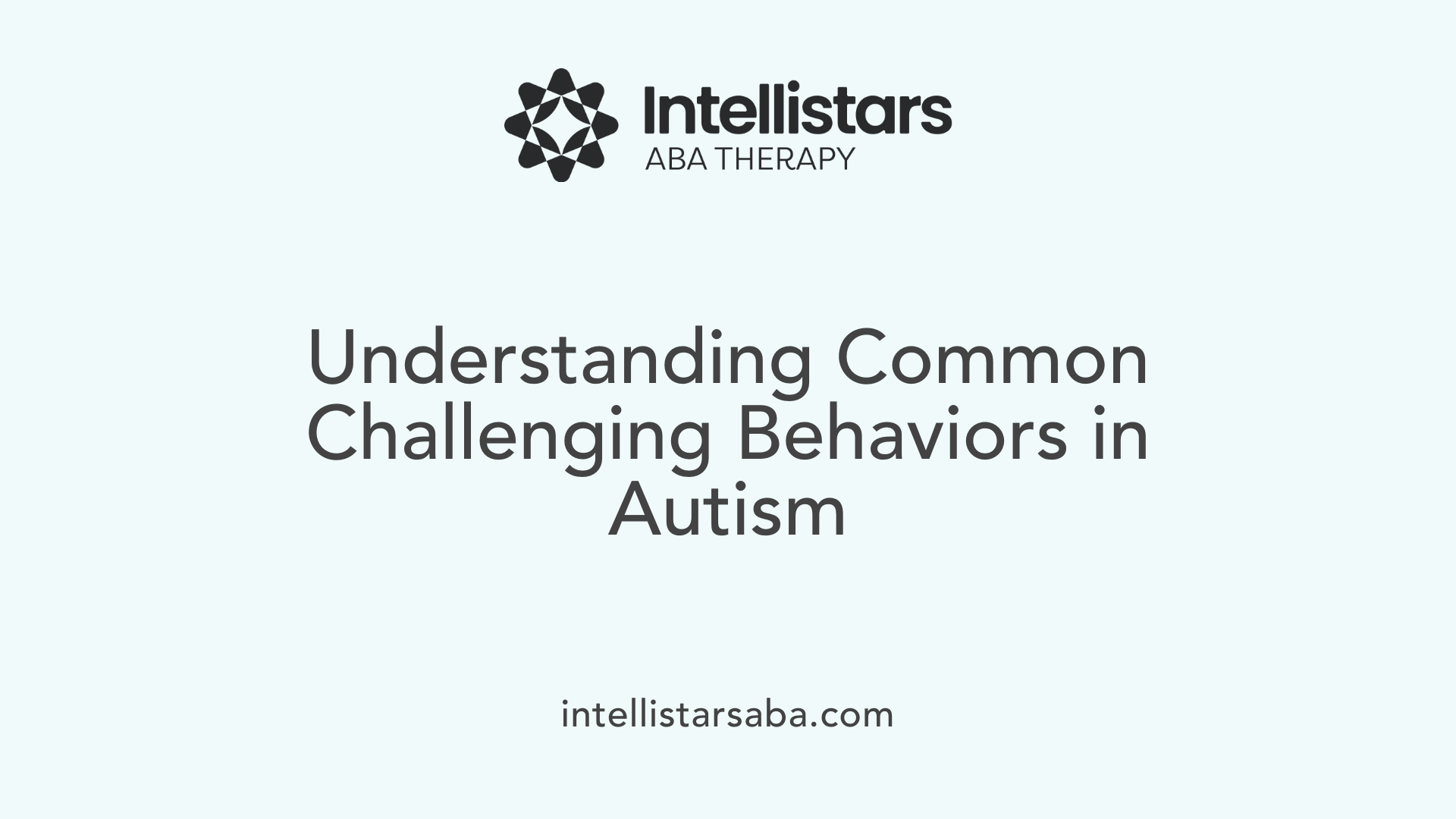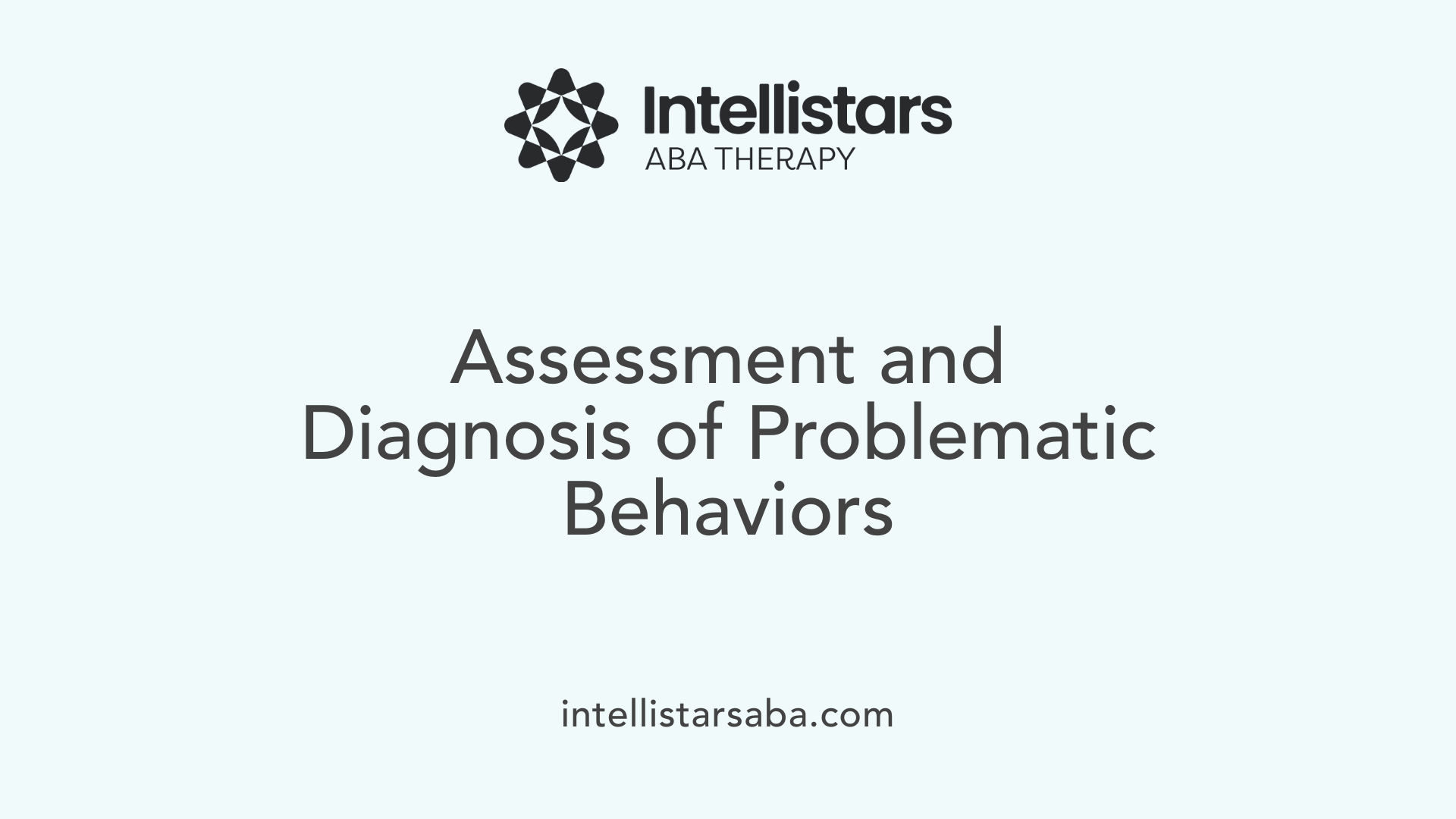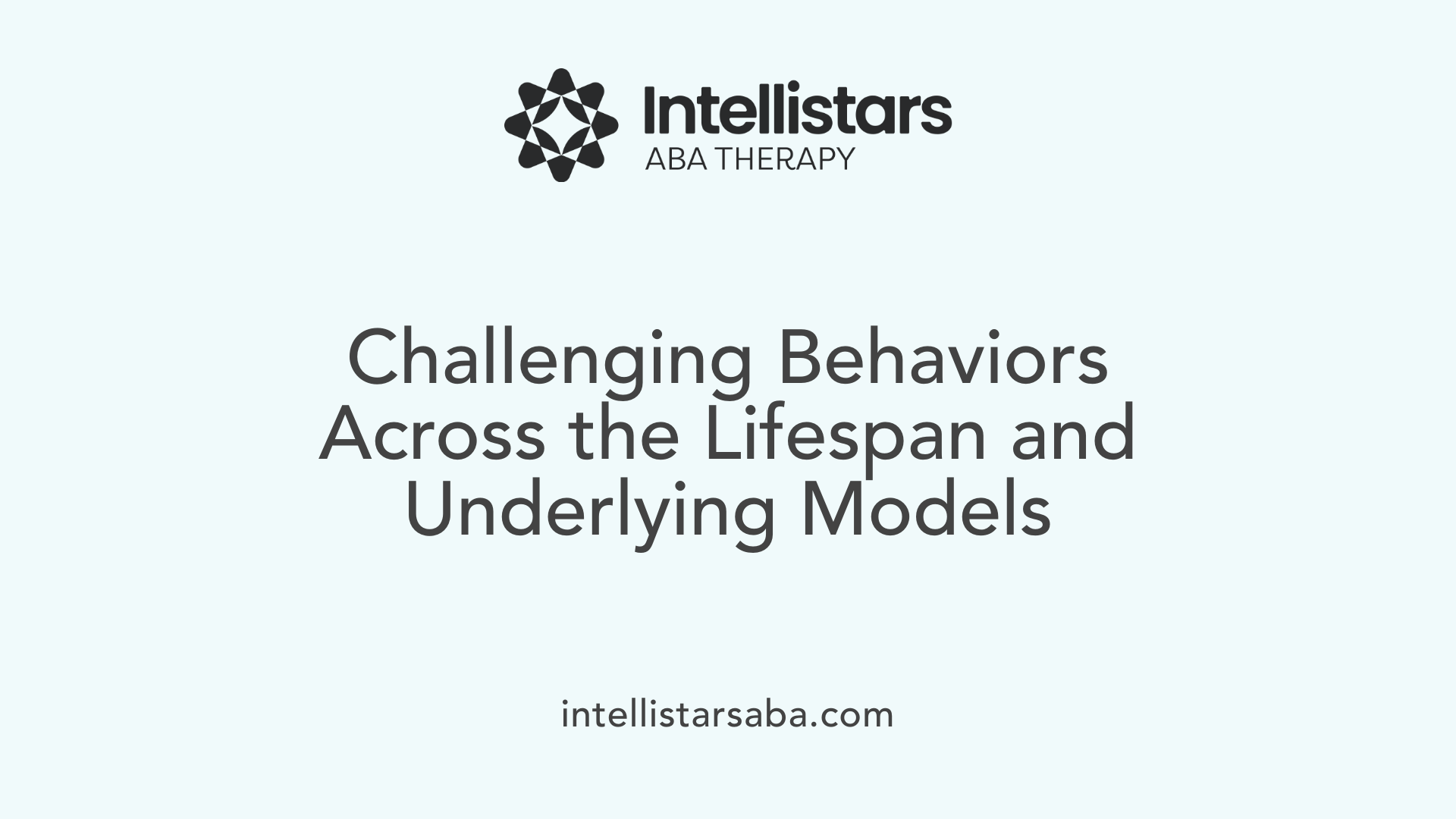Navigating the Complexities of Autism Behaviors
Challenging behaviors are common in individuals with autism spectrum disorder (ASD) and can significantly impact daily life for individuals and their support networks. These behaviors include aggression, self-injurious actions, tantrums, meltdowns, and repetitive behaviors like stimming. Understanding the underlying causes, assessment methods, and effective management strategies is essential for improving quality of life and fostering positive development. This article explores the nature, causes, assessment techniques, and intervention approaches for autism-related behavior problems, emphasizing practical tips and the importance of tailored support.
Common Challenging Behaviors in Autism

What are common challenging behaviors in individuals with autism?
Challenging behaviors in autism encompass a wide range of actions that can be difficult for both individuals and their support systems. Among the most prevalent are aggression, such as hitting, biting, kicking, or other forms of physical violence. These acts may serve as responses to frustration, sensory overload, or communication difficulties.
Self-injurious behaviors are also widespread, including headbanging, face-slapping, hair-pulling, or banging parts of the body against surfaces. Such actions can be harmful and are often utilized by individuals as a way to manage overwhelming emotions or sensory experiences.
Tantrums and emotional meltdowns are common reactions to environmental stimuli or unmet needs. During a meltdown, a person may exhibit a complete loss of control, which can involve vocal outbursts, crying, or collapsing.
Repeating behaviors, often called stimming, include rocking, jumping, spinning, hand-flapping, finger-flicking, or repeating words or phrases. While some stimming helps individuals manage anxiety or sensory input, in many cases, it can disrupt daily activities or become more persistent.
These behaviors are influenced by several interconnected factors. Communication difficulties make it hard for individuals to express their needs, leading to frustration and acting out.
Sensory sensitivities—either hyper-responsiveness or hypo-responsiveness to stimuli like sounds, lights, textures, or smells—can trigger behavioral responses.
Medical comorbidities, such as anxiety, sleep disturbances, gastrointestinal issues, or pain, can also exacerbate challenging behaviors. For example, sleep problems may increase irritability and reduce self-regulation.
Environmental factors, including unstructured routines, sudden changes, or overstimulating environments, often act as triggers. Transitioning between activities or dealing with unfamiliar settings can lead to stress and behavioral outbursts.
According to research, more than half of children and adolescents with autism exhibit behaviors like physical aggression or self-injury at some stage, underscoring their commonality.
As autism is a lifelong condition, these behaviors can persist into adulthood, potentially affecting safety and quality of life unless effectively managed.
Treatment strategies typically involve behavioral modifications using evidence-based therapies such as Applied Behavioral Analysis (ABA), along with functional behavior assessment to identify specific triggers.
Medications may be prescribed in some cases to help reduce irritability and aggression, but behavioral interventions remain fundamental.
Understanding these behaviors requires recognizing their complex roots in biological, sensory, emotional, and environmental domains. Tailoring support and interventions to each individual’s needs is essential for improving outcomes and enhancing well-being.
Causes and Contributing Factors of Challenging Behaviors
What causes and contributes to challenging behaviors in autism spectrum disorder?
Challenging behaviors in autism are often a result of multiple interacting factors that influence how an individual reacts and interacts with their environment. These behaviors, which can include aggression, self-injury, tantrums, and meltdowns, typically stem from a combination of sensory, medical, emotional, and environmental influences.
One significant contributor is sensory sensitivities and overload. Many individuals with autism experience hyper- or hypo-responsiveness to sensory inputs such as sounds, lights, textures, or smells. An overload of sensory stimuli can lead to distress, resulting in behaviors like screaming or self-injury as a way to cope or release discomfort.
Medical comorbidities are also closely linked to challenging behaviors. Conditions like allergies, constipation, migraines, or sleep disturbances can cause pain or discomfort that the individual cannot verbalize. For example, new or worsening gastrointestinal issues or ear infections might manifest as increased irritability or aggression, making medical assessment crucial in these situations.
Impairments in interoception—the ability to perceive internal bodily sensations—further complicate emotional and behavioral regulation. When a person struggles to recognize or interpret internal cues such as hunger, tiredness, or pain, they may exhibit behaviors like yelling or withdrawal because they are overwhelmed or uncomfortable but do not know how to communicate it.
Psychological factors, especially anxiety, play a substantial role. Many individuals with autism experience heightened anxiety levels, which can lead to behaviors like tantruming, aggression, or avoidance. Anxiety may be triggered by unfamiliar situations, social demands, or changes to routine, sometimes functioning as an internal stress response.
Environmental triggers encompass change and unstructured activities. Routine disruptions, transitions, or unpredictable settings can cause confusion or stress, leading to outbursts. For individuals who rely heavily on predictable routines for calmness, even minor changes can provoke challenging behaviors.
In addition to these, unmet physiological needs such as hunger, fatigue, or sleep deprivation often exacerbate behavioral issues. Sleep problems are especially common, with disturbances like waking during the night correlating with more frequent and intense challenging behaviors.
Understanding the diverse and interrelated causes of challenging behaviors helps caregivers and professionals develop more effective, targeted strategies to support individuals with autism. This approach encourages a comprehensive assessment of both behavioral patterns and underlying medical and sensory issues, enabling interventions that address root causes rather than just symptoms.
| Contributing Factor | Explanation | Impact on Behavior |
|---|---|---|
| Sensory sensitivities and overload | Hyper/hypo-responsiveness to noise, lights, textures, or smells. | Meltdowns, self-injury, aggression |
| Medical issues | Allergies, gastrointestinal problems, sleep disturbances. | Increased irritability, pain-related behaviors |
| Impairments in interoception | Difficulty sensing internal bodily cues, like hunger or pain. | Frustration, unpredictable outbursts |
| Anxiety | Heightened emotional distress due to social or environmental factors. | Tantrums, avoidance, aggression |
| Environmental triggers | Routine changes and unstructured activities. | Meltdowns, refusal to engage |
Efforts to manage challenging behaviors should consider this broad range of contributors. A thorough assessment involving medical professionals, behavioral experts, and caregivers can help identify specific triggers and develop tailored strategies to support better outcomes.
Assessment and Diagnosis of Problematic Behaviors

How are problematic behaviors in autism assessed and diagnosed?
Evaluating challenging behaviors in individuals with autism involves a detailed and systematic approach that combines multiple methods. Observing the child's behavior directly, often in natural settings, provides insights into triggers and patterns of these behaviors. Caregivers and family members play a crucial role by providing detailed reports about the frequency, intensity, and context of behaviors such as aggression, tantrums, or self-injury.
Standardized assessment tools are also central to diagnosis. Instruments like the Autism Diagnostic Observation Schedule, Second Edition (ADOS-2), and the Autism Diagnostic Interview-Revised (ADI-R) are widely used. These tools help clinicians identify behavioral patterns, social communication skills, and repetitive behaviors that are characteristic of autism. They also help determine the functions of problematic behaviors—whether they serve as escape, attention-seeking, or access to preferred items.
Diagnosis involves applying criteria from the Diagnostic and Statistical Manual of Mental Disorders, Fifth Edition (DSM-5). According to DSM-5, autism spectrum disorder requires persistent deficits in social communication and interaction across multiple contexts, along with restricted and repetitive patterns of behavior. Severity levels are assigned based on the amount of support the individual needs.
Professionals like neurodevelopmental pediatricians, psychologists, and neurologists conduct comprehensive assessments, considering the child's developmental history and current functioning. These evaluations may include clinical observations, standardized tests, and discussions with parents or caregivers to gather developmental background.
Medical investigations, such as blood tests or brain imaging, are generally not used to diagnose autism itself but may be necessary when there are signs of comorbid medical conditions or to rule out other causes of behavioral changes.
Importantly, early detection makes a significant difference. Screening tools like the Modified Checklist for Autism in Toddlers, Revised (M-CHAT), are used widely for early identification. These tools are simple questionnaires that help identify children at risk and prompt further professional evaluation.
Overall, diagnosing autism and its associated problematic behaviors is a multi-step process that emphasizes early identification, comprehensive behavioral assessment, and a thorough developmental history. This approach allows for tailored intervention strategies to support individuals effectively.
Management Strategies and Interventions for Challenging Behaviors

What management strategies and interventions are effective for challenging behaviors in autistic individuals?
Addressing challenging behaviors in individuals with autism requires a thoughtful, tailored approach that focuses on understanding why behaviors occur. The foundation of effective intervention begins with a thorough behavioral assessment, including functional behavior analysis (FBA). This process helps identify the purpose or function behind behaviors such as aggression, self-injury, or tantrums, which can be linked to seeking attention, escape from demands, sensory overload, or other underlying needs.
Prevention strategies play a crucial role in reducing the likelihood of challenging behaviors. Visual supports, social stories, and clear routines help create predictable environments that lessen anxiety and confusion. Offering choices empowers individuals, promoting a sense of control and reducing frustration.
Using reinforcement, extinction, and replacement behaviors constitutes a core toolkit. Positive reinforcement, such as praise or preferred activities, encourages desirable behaviors. Extinction involves discontinuing attention or rewards for challenging behaviors, decreasing their occurrence over time. Teaching replacement behaviors—like functional communication skills—gives individuals alternative ways to express their needs and emotions.
Evidence-based interventions backed by research have demonstrated effectiveness in managing challenging behaviors. These include:
| Intervention | Description | Key Features |
|---|---|---|
| Early Intensive Behavioral Intervention (EIBI) | A structured, early-start program based on Applied Behavior Analysis (ABA) | Focuses on skill development and reducing disruptive behaviors, often through intensive, one-on-one sessions |
| Naturalistic Developmental Behavioral Intervention (NDBI) | Combines ABA principles with natural play and everyday routines | Promotes skill generalization and social engagement |
| JASPER (Joint Attention, Social Communication, and Play Emphasis) | Focuses on building social communication and joint attention | Uses play-based strategies to improve social behaviors |
Incorporating sensory integration therapies can help address sensory sensitivities that trigger behaviors. Structured routines provide stability, helping individuals feel secure and reducing behavioral outbursts. Communication supports, such as augmentative and alternative communication (AAC) devices, facilitate effective expression of needs, decreasing frustration.
Crisis management plans and support for families are vital components. Training caregivers to respond consistently and calmly, maintaining safety, and understanding triggers are essential. Collaboration with healthcare professionals, including psychologists and occupational therapists, ensures interventions remain effective and adaptable.
Technology also plays a role, with apps and visual scheduling tools aiding communication and routine management. Consistent application of these strategies over time results in more sustainable behavior improvements and better quality of life for individuals with autism.
In sum, a comprehensive combination of assessment, preventative supports, evidence-based interventions, sensory and communication strategies, and family involvement creates an effective framework for managing challenging behaviors in autism.
Supporting Caregivers and Environment Adaptation

How can caregivers and professionals support individuals with autism who display problematic behaviors?
Supporting individuals with autism who exhibit challenging behaviors involves a multi-faceted approach centered around understanding the behavior's purpose and establishing supportive routines.
First, implementing individualized behavior management plans based on functional behavioral assessments (FBA) is crucial. These assessments help identify specific triggers and the reasons behind behaviors, whether they are seeking attention, escaping demands, or accessing preferred items. Tailoring interventions to these insights increases their effectiveness.
Using clear communication methods significantly reduces frustration. Visual supports, social stories, and alternative communication systems such as Picture Exchange Communication System (PECS) or augmentative and alternative communication (AAC) devices allow individuals to express their needs effectively, decreasing instances of distress and problematic behaviors.
Consistency in routines and creating predictable environments help individuals feel secure and understand expectations, which can minimize anxiety and undesirable behaviors. Incorporating visual schedules, timers, and structured activities turns unpredictability into predictability, promoting calmness and cooperation.
Positive reinforcement plays a vital role. Rewarding desired behaviors encourages their recurrence and helps build independence. Rewards can include praise, preferred activities, or tangible items, tailored to what motivates the individual.
Training programs for caregivers, such as the WHO Caregiver Skills Training, are designed to teach effective strategies, problem-solving techniques, and stress management. These programs empower caregivers with knowledge and skills to handle challenging situations calmly and consistently, thereby improving outcomes.
Addressing sensory sensitivities is another essential component. Some behaviors stem from discomfort caused by noise, lights, textures, or other sensory inputs. Creating sensory-friendly spaces and promoting coping strategies like using noise-canceling headphones or sensory breaks can significantly reduce agitation.
Supporting social skills through role-playing, social stories, and structured socialization activities enhances interpersonal competence and confidence. These strategies can help individuals better navigate social interactions, reducing frustration and aggression.
| Strategy | Implementation Examples | Goals |
|---|---|---|
| Behavior Management Plans | Functional assessments, individualized plans | Identify triggers, tailor interventions |
| Visual Supports & Communication | PECS, visual schedules, social stories | Reduce frustration, promote understanding |
| Routine & Environment Structuring | Consistent daily schedules, clear rules | Increase predictability, reduce anxiety |
| Caregiver Training | WHO Caregiver Skills Training, workshops | Enhance skills, reduce caregiver stress |
| Sensory and Social Skills Support | Sensory rooms, social stories, role-playing | Improve comfort and social participation |
Creating a supportive environment involves collaboration among caregivers, educators, therapists, and healthcare providers. This teamwork ensures that interventions are consistent and responsive to changing needs.
Further resources and practical guides are available through organizations focusing on autism support tools. They provide structured approaches and tips designed to help caregivers manage and support behaviors effectively.
In summary, a combination of personalized behavioral strategies, environmental adjustments, caregiver education, and social skill development creates a comprehensive support environment. This holistic approach aims not only to reduce problematic behaviors but also to foster positive development and enhance quality of life for individuals with autism.
Challenging Behaviors Across the Lifespan and Scientific Models

Do challenging behaviors in autism vary across different age groups?
Challenging behaviors in autism are not static; they tend to change significantly with age. In children, such behaviors commonly include temper tantrums, repetitive movements (stimming), echolalia, and sensitivities to sensory input. These behaviors often reflect difficulties in processing sensory stimuli or communication challenges. As children grow, some behaviors may decrease in frequency or intensity, although certain behaviors can evolve into more complex issues.
During adolescence, there can be an escalation in behaviors such as aggression, self-injury, and emotional outbursts. This period often involves increased risks of mental health issues like depression and anxiety, which can influence the presentation of challenging behaviors. Some repetitive behaviors may become more subtle, but new behaviors, such as risky activities or compulsive actions, might emerge.
In adulthood, many individuals with autism develop strategies to mask or suppress certain challenging behaviors. However, they might still experience persistent difficulties with emotional regulation, health-related issues, and social interactions. Aging can also introduce new challenges, including physical health problems and changes in routine or environment, which may trigger behaviors.
Overall, these behavioral patterns are influenced by neurobiological development, environmental factors, and life experiences. Recognizing the dynamic nature of these behaviors across the lifespan is crucial for developing appropriate support and interventions.
What do research studies say about long-term patterns in challenging behaviors?
Longitudinal studies, including a systematic review involving 56 studies, show that challenging behaviors tend to decline slightly over time. Across 37 independent samples, behavior scores exhibited a small but statistically significant decrease, especially when assessments were spread over longer intervals and in older participants.
This trend suggests some natural improvement, possibly due to developmental growth, adaptive learning, or the effects of intervention strategies like behavioral therapy. However, for many individuals, certain behaviors such as aggression or self-injury may persist into adulthood, underscoring the need for ongoing support.
Understanding these patterns can help caregivers and professionals better plan long-term management strategies. It emphasizes that some challenging behaviors are part of the developmental course of autism but may diminish with age and appropriate intervention.
How do models explain challenging behaviors in autism?
Various models help explain why challenging behaviors occur in individuals with autism. One prominent framework is operant conditioning, which describes behaviors as responses to antecedents (triggers) reinforced by consequences. For example, a child might hit or scream to escape an undesired activity or gain attention, behaviors that are reinforced by the social response they evoke.
Neurobiological factors are also significant. Impairments in interoceptive processing — the ability to sense internal bodily sensations like pain, hunger, or fatigue — can lead to behaviors that serve as responses to these internal states. For instance, discomfort from health issues or sensory overload might manifest as aggression or self-injury.
Anxiety, common among individuals with autism, further influences challenging behaviors. Elevated anxiety levels can increase emotional dysregulation, leading to meltdowns or aggression.
Other contributing factors include sensory sensitivities, difficulty with transitions, and environmental changes. These biological and psychological insights underscore the importance of tailored interventions that address both behavioral and neurobiological components.
Why is understanding behavior patterns important?
Recognizing how behaviors change over time informs better support and intervention planning. It allows caregivers, educators, and clinicians to tailor strategies that are developmentally appropriate and responsive to individual needs.
Effective support might involve behavioral therapies like Applied Behavioral Analysis (ABA), environmental modifications, medical treatments for comorbid conditions, and environmental adaptations. It also highlights the importance of identifying triggers — whether medical, sensory, or emotional — for prompt and appropriate responses.
Furthermore, understanding behavioral trajectories fosters a compassionate perspective, emphasizing that challenging behaviors are often mechanisms to communicate needs, manage emotions, or respond to discomfort. This knowledge is essential for promoting acceptance, reducing stress for individuals with autism, and improving their quality of life.
Towards Better Support and Understanding
Recognizing and addressing challenging behaviors in autism requires a multi-layered approach that considers biological, environmental, and developmental factors. Comprehensive assessment, tailored interventions, caregiver support, and ongoing research continue to improve outcomes. Creating supportive environments, promoting early intervention, and employing evidence-based strategies—such as ABA, visual supports, and social stories—are fundamental in helping individuals navigate their world and thrive. Emphasizing understanding and patience fosters a more inclusive and compassionate society, ensuring that each person with autism receives the respect and support necessary for a meaningful life.
References
- Understanding Challenging Behaviors in Autism Spectrum Disorder
- Behavior challenges | Autism Speaks
- Challenging Behaviors - Kennedy Krieger Institute
- Distressed behaviour - a guide for all audiences
- Challenging behaviour: autistic children and teenagers
- Editorial - Challenging behaviors in adults with autism
- How to help with your autistic child's behaviour - NHS
- Longitudinal studies of challenging behaviours in autistic children ...
- Behaviour - National Autistic Society






